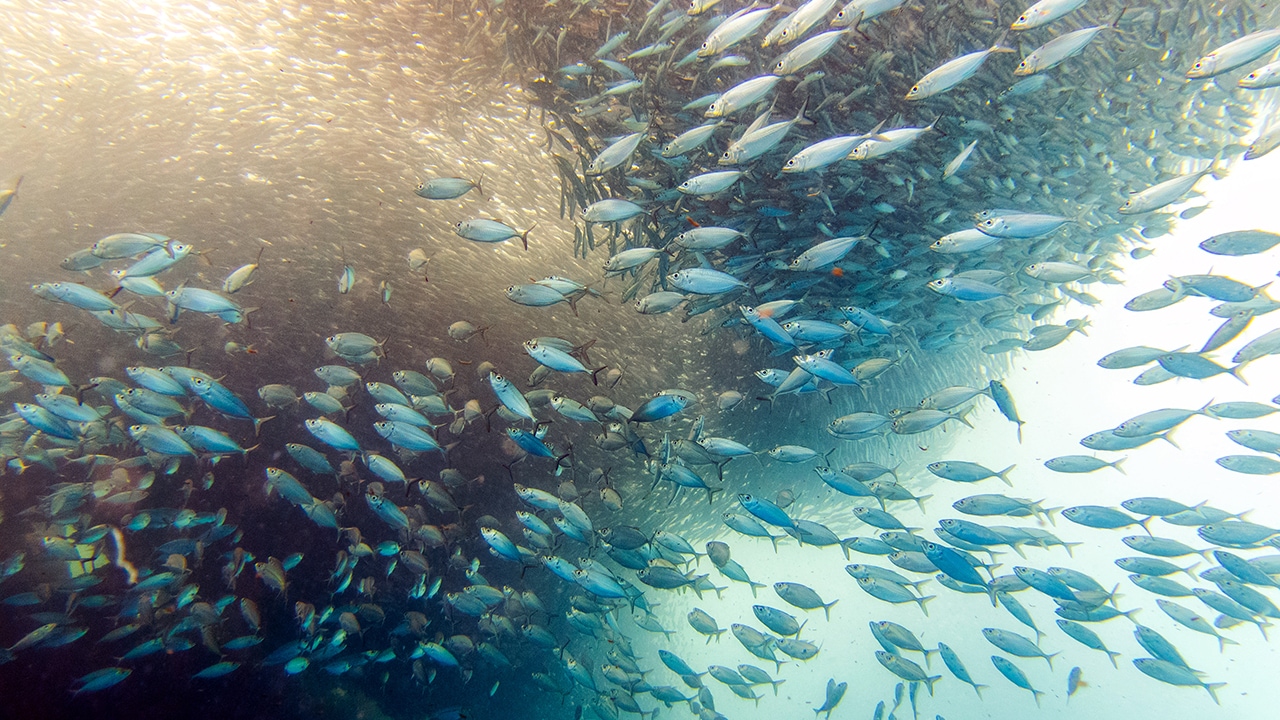Recurrent fish kill incidents in Filipino lakes are a nuisance and impose heavy costs on local aquaculture operators. Addressing the problem, the Department of Science and Technology – Advanced Science and Technology Institute (DOST-ASTI) has upgraded its offshore meteorological buoy system. The buoys are now able to monitor vital freshwater quality parameters. The upgrade improves the chances of detecting critical conditions at an early stage, allowing operators to move fish cages in due time.
The improved buoy system proved its worth when the regional office of the Bureau of Fisheries and Aquatic Resources (BFAR) compared their own data with the data generated by the buoy to assess water quality during a fish kill event in Taal Lake from 13-15 July 2023. The event affected 241 cages, resulting in an estimated damage of 586,38 metric tons.
Not only did the buoy data show similar dissolved oxygen levels as did measurements made by the bureau, but it also identified a downtrend in water quality parameters a month before the fish kill occurred. This observation concluded that the buoy was instrumental in the assessment of water quality in the areas near the site of deployment, aided with further water quality monitoring and analysis in affected areas of Taal Lake. This also shows that the buoy can generate short-term water quality forecasts.
Triggered by fish kill events
From 2011 to 2014, DOST-ASTI and the DOST – Metals Industry Research and Development Center jointly developed a low-cost and locally designed meteorological buoy for offshore monitoring. This development complemented the existing scientific buoys used by the DOST – Philippine Atmospheric, Geophysical, and Astronomical Services Administration to improve marine safety and enhance ocean observation systems in the Philippines.
The original design of the buoy included a payload that gathers hydrometeorological sensor data such as air pressure, air temperature, wind speed, wind direction, wave height, wave period, and sea surface temperature.
Following research and consultations with BFAR and the Local Government Unit of San Nicolas, Batangas, the team recognized the need to address the frequent fish kill situations in Taal Lake. Further, they identified this as an opportunity to broaden the payload capabilities of the meteorological buoy.
Next step: more affordable buoys
By May 2023, DOST-ASTI successfully redeployed the improved version of the buoy in Taal Lake. After further developments, the buoy currently incorporates water quality sensors that detect pH levels, ammonium, dissolved oxygen, dissolved oxygen saturation, specific conductivity, water temperature, water salinity, and water pressure on top of the previously mentioned hydrometeorological data.
In present developments, the team monitors the performance of the buoy across a range of technological aspects, with a primary focus on fulfilling real-time monitoring of Taal Lake’s quality to forecast and proactively prevent fish kills within its area of coverage. The team is also looking into designing a scaled-down version of the buoy that maintains full functionality to cut deployment costs as well as providing a more accessible and affordable option for potential stakeholders.
The text is inspired by the article “Fish kill forecasting a priority for DOST-ASTI’s continuous metbuoy development” by Chelsea Abellana at the DOST-ASTI website.







